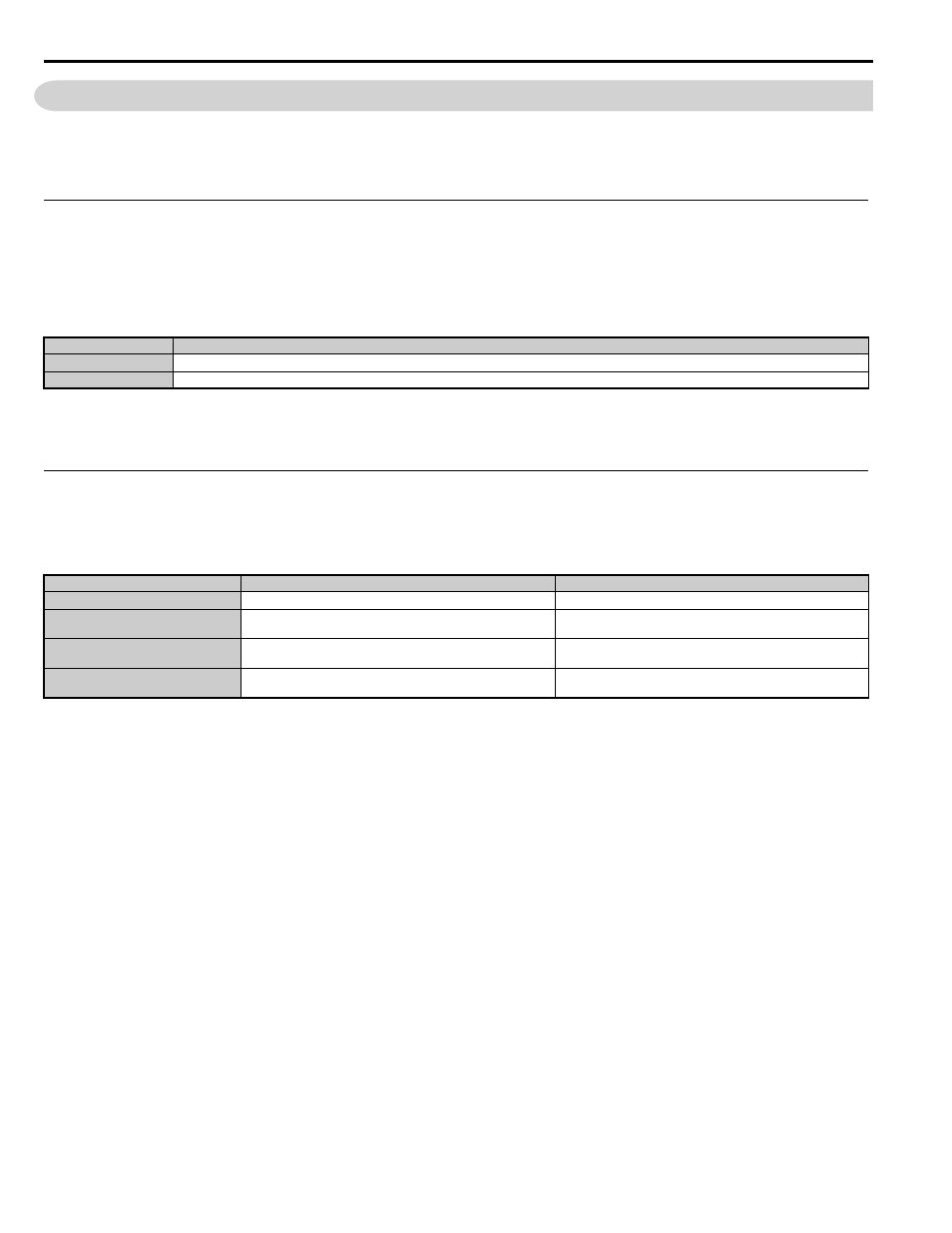C.10 enter command, Enter command types, Parameter h5-11 and the enter command – Yaskawa L1000E AC Drive Technical Manual for CIMR-LE Models for Elevator Applications User Manual
Page 442

442
YASKAWA ELECTRIC SIEP YAIL1E 01A YASKAWA AC Drive L1000E Technical Manual
C.10 Enter Command
C.10 Enter Command
When writing parameters to the drive from the PLC using MEMOBUS/Modbus communication, parameter H5-11
determines whether an Enter command must be issued to enable these parameters. This section describes the types and
functions of the Enter commands.
◆ Enter Command Types
The drive supports two types of Enter commands as shown in the table below. An Enter command is enabled by writing 0
to register numbers 0900H or 0910H. These registers can only be written to; attempting to read from these registers will
cause an error.
Table C.6 Enter Command Types
Note: Limit the number of times writing to the EEPROM because the EEPROM can only be written to 100,000 times. The Enter
command registers are write-only and if these registers are read, the register address will be invalid (Error code: 02H). An Enter
command is not required when reference or broadcast data are sent to the drive.
◆ Parameter H5-11 and the Enter Command
When changing parameters via MEMOBUS/Modbus, H5-11 determines whether an Enter command is necessary to
activate parameter changes in the drive.
Register No.
Description
0900H
Simultaneously writes data into the EEPROM (non-volatile memory) of the drive and enables the data in RAM. Parameter changes remain after cycling power.
0910H
Writes data in the RAM only. Parameter changes are lost when the drive is shut off.
H5-11 Settings
H5-11 = 0
H5-11 = 1
How parameter settings are enabled
When the Enter command is received from the master.
As soon as the value is changed.
Upper/lower limit check
Upper/lower limit check is performed, taking the settings of related
parameters into account.
Checks only the upper/lower limits of the parameters that were
changed.
Default value of related parameters
Not affected. The settings of related parameters remain unchanged.
They must be changed manually if needed.
Default settings of related parameters are changed automatically.
Error handling when setting multiple
parameters
Data is accepted even if one setting is invalid. The invalid setting will
be discarded. No error message occurs.
Error occurs if only one setting is invalid. All data that was sent are
discarded.
